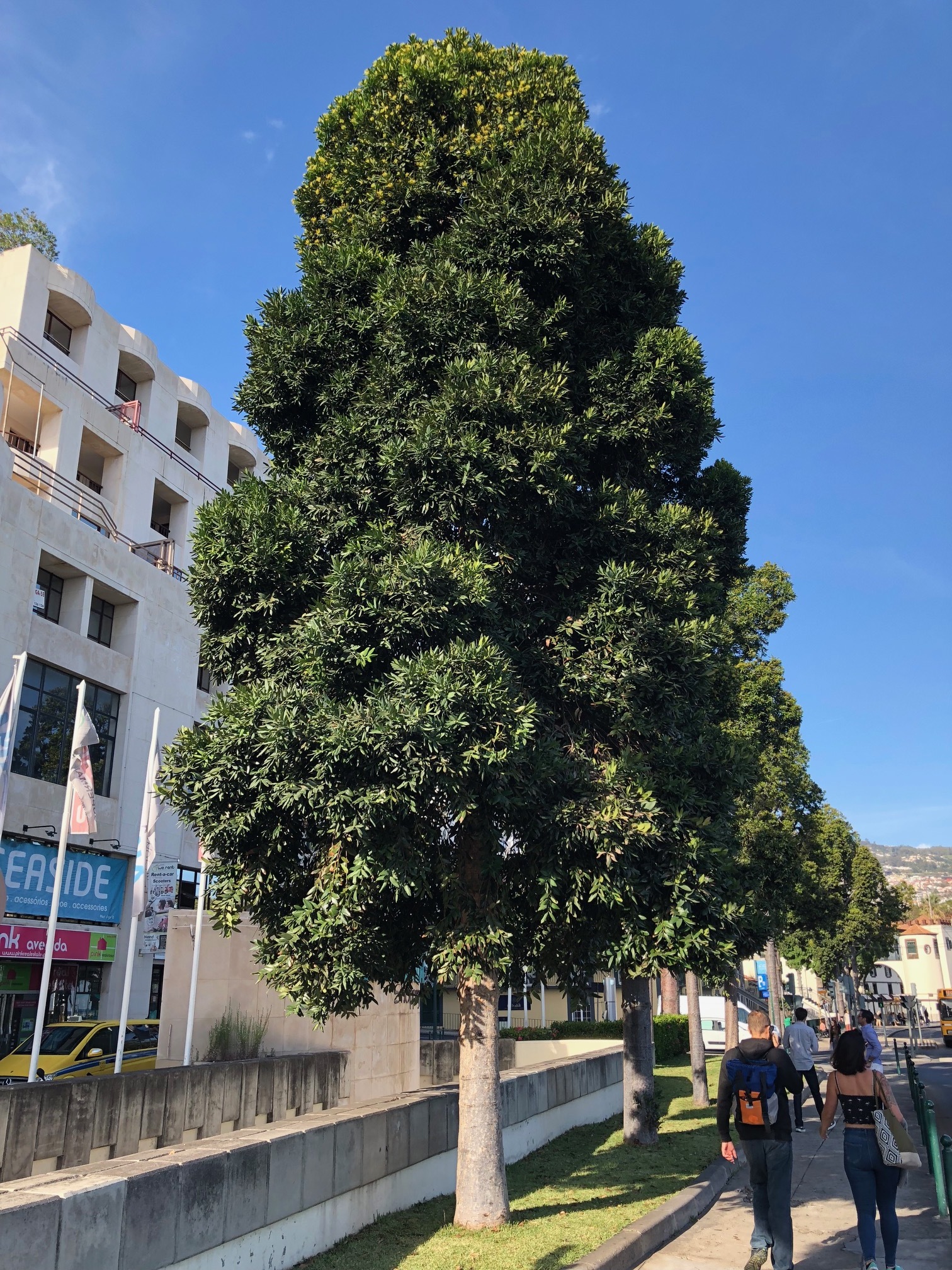Madeira Trees
Just got back from a week visiting the island of Madeira - a Portuguese island off the coast of Morocco, just north of the Canary Islands. About 33 degrees latitude, so about the same as San Diego, and it also has a similar climate - coastal, not too hot, but warm enough to appear semitropical. It used to be a big producer of sugar cane, and you still see sugar cane growing and being harvested in spots around the island, but the bigger crop now is bananas, which have become a big export crop. And of course vineyards, for the world-famous madeira wine.
African tulip tree in Funchal's old town
Since the climate is similar to coastal California, I was curious to see what trees were used in Funchal (the capital and largest city - really the only city of any size on the island). We were lucky to be able to stay at a hotel (Quinta da Casa Branca, if you ever go) that was formerly an estate owned by a guy who was obsessed about tropical trees - the entire 4 acre property was covered with spectacular and unusual tropical and semitropical trees, all of them with identifying plaques with scientific name, common name (in Portuguese and English) and location of origin. OK, so that might have had something to do with our choice of hotel.
Once we got out into the city, the most spectacular trees were the African tulip trees (Spathodea campanulata) - all of them in bloom (we were there in early April). The tree is native to tropical Africa, and not all that well suited to our cooler Bay Area climate - not sure I have ever seen one in the Bay Area. The trees are amazing in bloom - football-size clusters of intense red-orange trumpet-shaped flowers.
Laurus novocanariensis - closeup of leaves and flowers
We spent one day hiking in out in the country, in the laurel forests of the island (also called laurissilva), a type of forest found in the Atlantic islands of Madeira, the Canaries and the Azores - areas with high humidity and relatively stable, mild temperatures. This type forest is a remnant of what once covered big parts of Europe before the ice age. The forest had a species from the Laurus genus (the genus that gives us Laurus nobilis, the sweet bay tree that is used in Mediterranean cooking). The Madeiran species is Laurus novocanariensis, which is endemic to Madeira and the Canary Islands (meaning it exists only there), and was just recently declared a separate species - it was previously thought to be a variety of Laurus azorica. Apparently it hasn't been around long enough to develop a common name, so I'll dub it Madeira laurel. (The hikes in Madeira are amazing - they typically follow irrigation channels called "levadas" that follow the ridge lines of the mountains and bring water from the wetter northern side of the island to the drier south.)
Dragon tree - Funchal botanical garden
We saw lots of examples of Dracaena draco, the Canary Islands dragon tree. The tree is native to Madeira (and to the Canary Islands, Cape Verde and western Morocco), but we never saw any in the wild. They were common in Funchal - perhaps evidence of some local pride in a native tree :-) Unlike most trees, dragon trees are monocots, related to palms and grasses. The largest example we saw was in Madeira's botanical garden (a real gem, by the way - not to be missed if you're visiting the island).
Queensland kauri in Funchal
One of the big tree-surprises in Funchal was that the city's principal street was Agathis robusta - the Queensland kauri - a tree in the Araucaria family from northern Australia, closely related to Agathis australis, the more famous kauri from New Zealand. The trees were very erect/fastigiate - perhaps a variety that's been bred for that quality? I've never seen this species used as a street tree anywhere in the world, but they were very happy in Funchal. Maybe something to experiment with in similar California conditions?
And, of course, there were pride of Madeira (Echium candicans). They weren't quite in season (surprisingly, since they're in full bloom in San Francisco).




